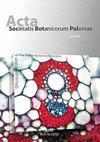拯救环境的植物。植物修复
IF 0.8
4区 生物学
Q3 PLANT SCIENCES
引用次数: 0
摘要
文明进步的很大一部分是以牺牲自然环境为代价的,而自然环境最近已经到了威胁其创造者的地步。植物在我们生活的各个方面都扮演着重要的角色,事实证明,我们可以依靠它们来减少这种威胁。生物及其创造的系统保护和恢复环境的能力是一种被称为环境生物技术的技术的核心。科学技术的进步创造了一门以植物为基础的学科,即植物修复。这项技术使我们能够消除或降低我们周围环境中的污染物水平。我们可以借助抗性植物从污染的土壤和水中提取重金属,回收贵金属和稀有元素。当土壤或水被有机化合物污染时,我们试图在植物和它们的微生物群的帮助下完全消除它们。植物从水中提取与污染物在水中和沉积物中的积累有关,所有水系的大型植物都参与其中,包括自由漂浮的水下植物和浮出水面的植物。这些植物的任务,除了积累金属或有机毒素,也是磷和氮的吸收,以防止水体富营养化。近年来,空气质量恶化了。如今,90%的人口呼吸着不符合世卫组织标准的空气。应该强调的是,在室外空气的情况下,没有去除污染物的工业系统。事实上,我们只能依靠自然:降雨和植物。室内空气有时甚至比室外污染更严重,因此,在植物的帮助下,我们在室内应该是安全的,因为植物能够创造一个避难所。此外,它满足了生物填充的欲望,改善了我们的情绪。本文章由计算机程序翻译,如有差异,请以英文原文为准。
Plants for saving the environment- Phytoremediation
A large part of the civilizational progress has been achieved at the expense of the natural environment, which recently reached the stages that threaten its creator. Plants play an important role in various areas of our lives, and it turned out that we can rely on them to reduce this threat. The ability of living organisms and the systems they create to protect and restore the environment is at the core of a technology called environmental biotechnology. Advances in science and technology have created a plant-based discipline known as phytoremediation. This technology allows us to remove or reduce the level of pollutants in our surroundings. We can phytoextract heavy metals from contaminated soil and water with the help of resistant plant species and recover noble metals and rare elements. When the soil or water is contaminated with organic compounds, we try to eliminate them completely with the help of plants and their microbiome. Phytoextraction from water is related to the accumulation of pollutants in water and sediments, in which macrophytes from all water groups participate, including free-floating submerged and emerged plants. The task of these plants, apart from the accumulation of metals or organic toxins, is also the uptake of phosphorus and nitrogen to prevent the eutrophication of water. In recent years, the quality of air has deteriorated. Nowadays, 90% of the population breathes air that does not meet WHO standards. It should be emphasized that in the case of outdoor air, there is no industrial system for removing pollutants. In fact, we can only count on nature: rainfall and plants. Indoor air is sometimes even more polluted than outside and, therefore, we should be safe in it with the help of plants that are able to create a refuge. Additionally, it fulfills biofilling desires and improves our mood.
求助全文
通过发布文献求助,成功后即可免费获取论文全文。
去求助
来源期刊
CiteScore
2.00
自引率
10.00%
发文量
18
审稿时长
1 months
期刊介绍:
The journal has been published since 1923 and offers Open Access publication of original research papers, short communications, and reviews in all areas of plant science, including evolution, ecology, genetics, plant structure and development, physiology and biochemistry.

 求助内容:
求助内容: 应助结果提醒方式:
应助结果提醒方式:


